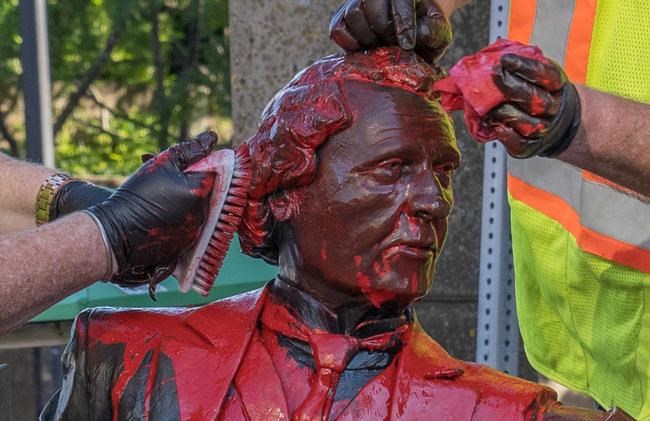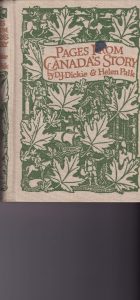(first posted on July 1, 2020 by rdavies)
Long gone are the survey courses in both of my youth. With the widespread usurpation by politically-correct topics, kids and newcomers no longer know, study, or encounter the following:
Frederick Banting
Alexander Graham Bell
Billy Bishop
the Bluenose
Robert Borden
Brebeuf
General Brock
the amazing building of the first transcontinental railway (CPR)
John Cabot
Guy Carleton
Jacques Cartier
Samuel de Champlain
Company of New France
Confederation
Conscription
Constitutional Act
Coureurs de Bois
Depression
Diefenbaker
Adam Dollard at Long Sault
the Donnellys
Tommy Douglas
Durham Report
Lief Ericson
Evacuation of Japanese Canadians
Expo ’67
First World War
FLQ Crisis
Fort Louisbourg
Terry Fox
Fur trade
Alexander Galt
Group of Seven
Halifax Explosion
Gordie Howe
Joseph Howe
Henry Hudson
Hudson’s Bay Company
Imperial Conference
Jesuits
Henry Kelsey
William Lyon Mackenzie King
Klondike Gold Rush
Sir Wilfrid Laurier
La Verendrye
League of Nations
Literature, Canadian
Loyalists
John A. MacDonald
Thomas D’Arcy McGee
Alexander Mackenzie
Jeanne Mance
Montcalm
New France
NORAD
North West Company
North-west Passage
North West Rebellion
Painting, Canadian
L.B. Pearson
Plains of Abraham
Port Royal
Quebec Act
Queenston Heights
Radisson
Red River Colony
Red River Rebellion
Regina Tornado
Louis Riel
St. Lawrence Seaway
Second World War
Seigneurial system
Seven Oaks Massacre
Seven Years War
Joey Smallwood
David Suzuki
Ken Taylor
Tecumseh
David Thompson
Treaty of Paris
Pierre Trudeau
Sir Charles Tupper
Union Nationale
George Vancouver
William Van Horne
Voyageurs
War of 1812
Winnipeg Strike
………………….
How well do Canadian kids, new Canadians, and Canadians under 60 know the history of our country? How well do they know, understand, and appreciate the broader, big-picture sweep of our country’s culture and its most famous and important people and events? Many have little or no sense of pre-2020 Canadian history back to the Viking visits in Newfoundland in the 11th century. *That’s 10 centuries of ignorance about our country, basically. A major cultural vacuum.
* It’s interesting, with all the new incoming First Nations curricula, how little attention is now being paid to the rest of Canada’s history as fostered and generated mainly by the English, the French, the Scots, and European immigrants before 1967 in nine of those 10 centuries–the actual industrious millions who physically built this country as we know it (and often take for granted) and made it relatively peaceful, educated, and civilized before recent heavily agenda-ed and political times.
……………………………………………………………………….

(Decent, well-informed, grateful, conscientious, patriotic citizens remove mindless dumb-ass spray-painted vandalism from a statue dedicated to the Father of Confederation, who was instrumental in first uniting this country back in the 19th century and keeping it from being absorbed by the U.S.)
Further: The past is now more forgotten and slighted than ever these daze. The ironic result of this is that few people under 50 and most newcomers to Canada have little or knowledge of this country’s history and the process which led us all here to now. No context and no large significant frame of reference for viewing things. This is yet another reason why politically-correct types have run amok with zero facts, perspective, context, understanding, and appreciation of the past. The sort of recklessness, nastiness, and vandalism, for instance, that has resulted with historical statues and monuments being vandalized or removed is often blind and cases of reverse discrimination (something seldom discussed when political correctness is being cited or played as a trump card).
- For more on a more fair, balanced, and truthful picture of MacDonald, Google Greg Piasetzki’s July 2023 National Post article about Sir John relative to indigenous culture.
The basic textbook of Canadian history that generations of Canadian elementary students of the past learned from in the twentieth century. It had a run from 1928 into the 1960s. I studied it in grade 5 (1959-60) and many of the names and events listed above were encountered for the first time then. It was a romantic take on Canadian history told in narrative form, but it was reasonably fact-based nonfiction.

